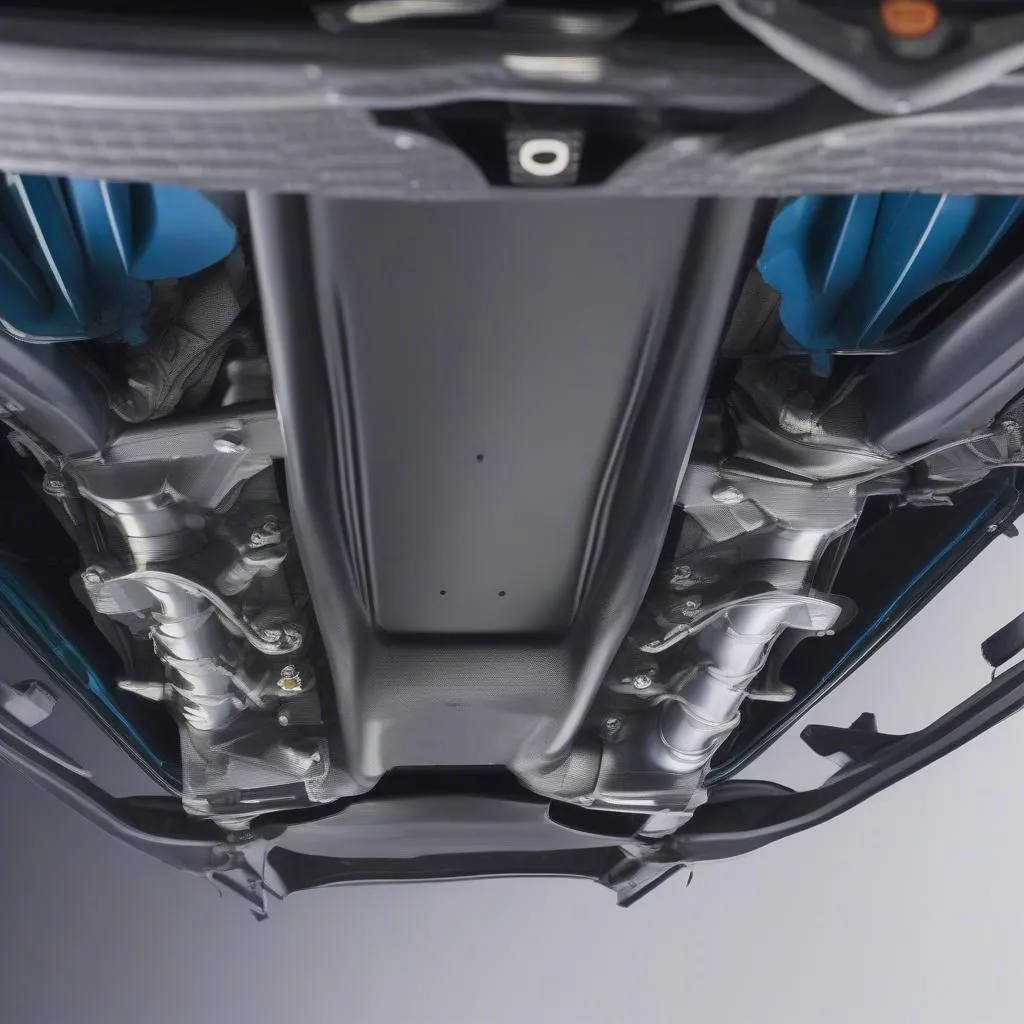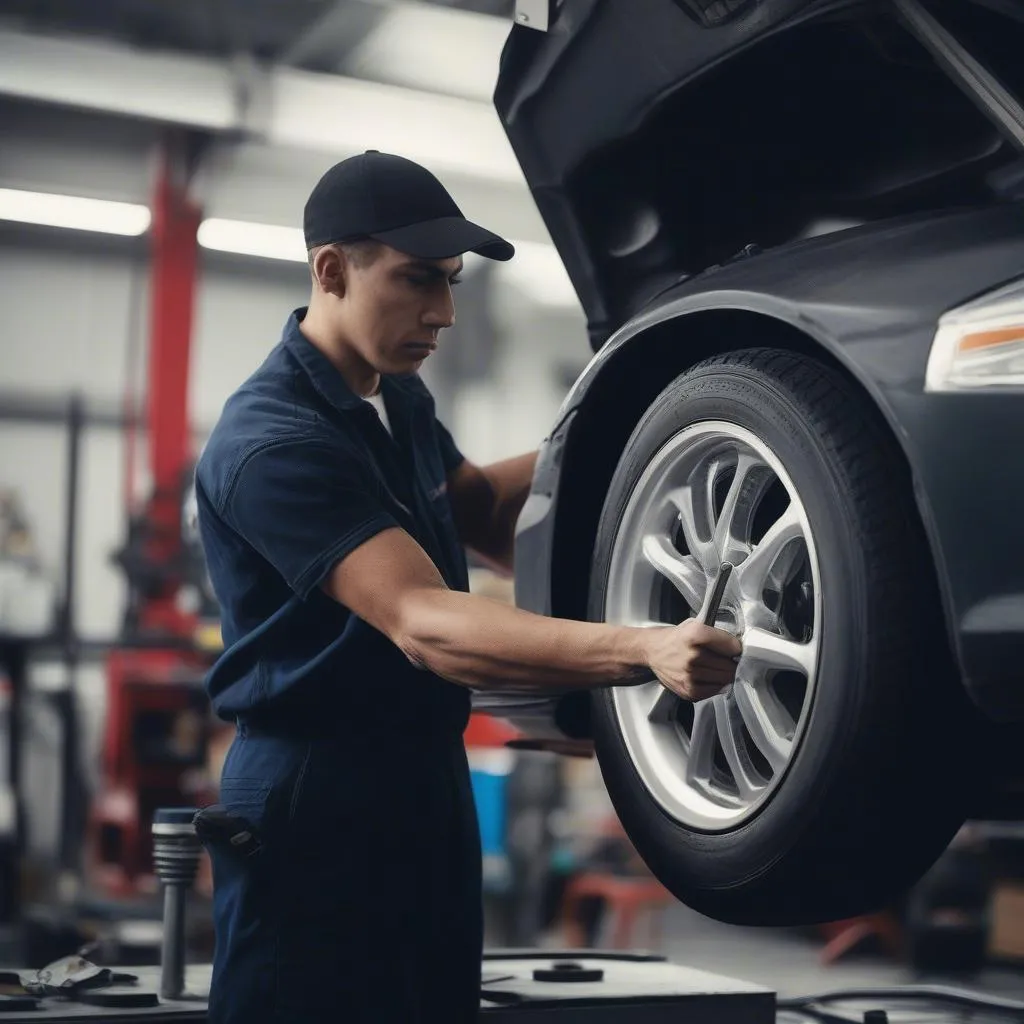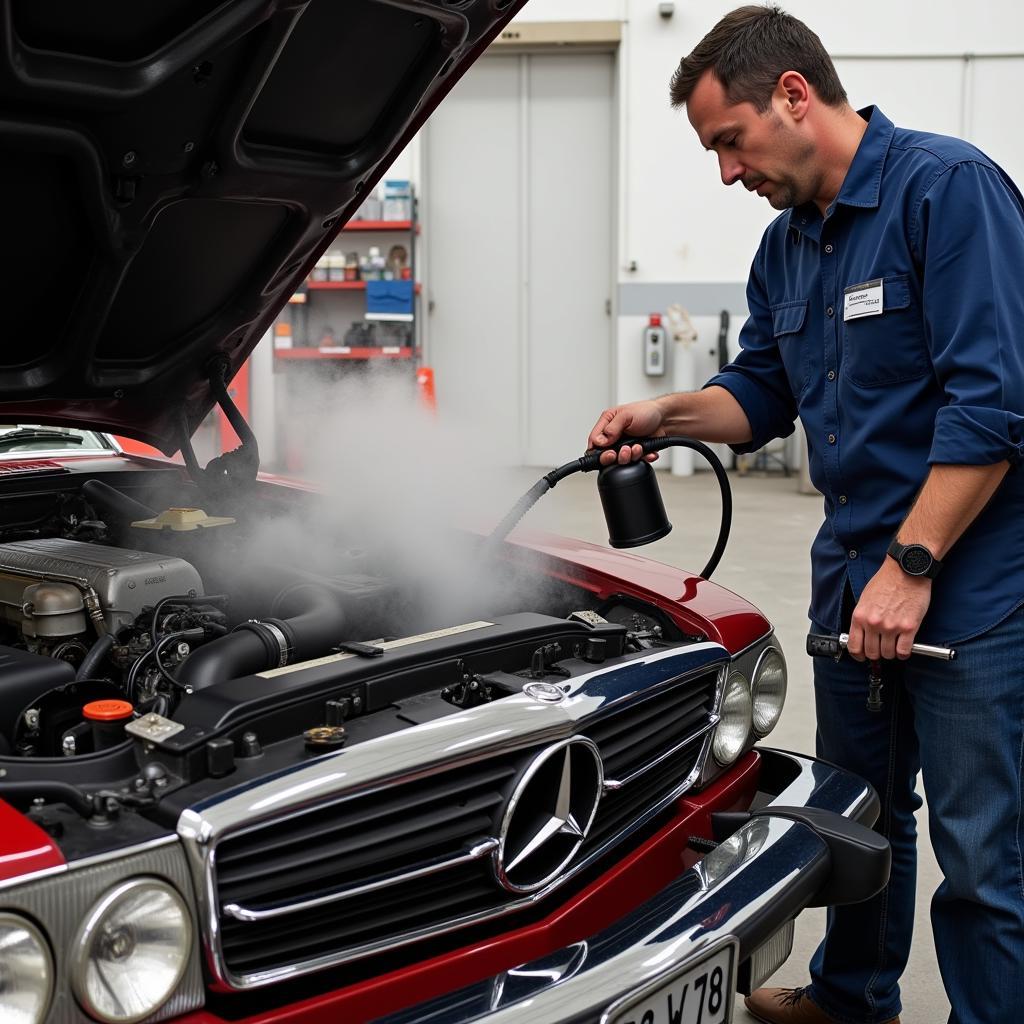If you’re a Mercedes owner, especially of a newer model, you might have experienced the infamous “porpoising” effect. This bouncing sensation, while visually reminiscent of a dolphin’s movement, can be an annoyance on the road, affecting the car’s handling and your overall driving experience. Don’t worry, this comprehensive guide dives deep into the Mercedes porpoising issue, exploring its causes, symptoms, and most importantly, the solutions to fix it.
Understanding the Root of Mercedes Porpoising
At its core, porpoising is an aerodynamic phenomenon that primarily affects high-performance cars with sophisticated aerodynamic designs. In simpler terms, it’s caused by the car’s underbody aerodynamics, particularly the ground effect.
Mercedes, in their pursuit of creating incredibly aerodynamic vehicles, have incorporated intricate designs that manipulate airflow beneath the car. However, this can sometimes lead to an excess of downforce at high speeds, pushing the car down towards the road. As the car gets lower, the airflow changes, reducing downforce and causing the car to rise again. This cycle of down and up movement, happening in quick succession, creates the uncomfortable bouncing effect known as porpoising.
 mercedes porpoising
mercedes porpoising
Recognizing the Telltale Signs
Before you jump to conclusions, it’s essential to ensure that what you’re experiencing is indeed porpoising and not a different suspension issue. Here are some key indicators:
- High-Speed Occurrence: Porpoising typically rears its head at higher speeds, often above 50 mph, when the aerodynamic forces are most pronounced.
- Bouncing Sensation: The most obvious symptom is a rhythmic up and down motion of the car, resembling a dolphin’s swimming pattern.
- Reduced Handling: You might notice decreased stability and control, particularly at high speeds, due to the fluctuating downforce.
If your Mercedes exhibits these symptoms, it’s highly probable that you’re dealing with porpoising.
 car aerodynamics
car aerodynamics
Essential Tools for Rectifying Mercedes Porpoising
Addressing Mercedes porpoising often involves adjustments to the vehicle’s setup and aerodynamics. While the specific tools may vary depending on the model and year, some common instruments include:
- Diagnostic Scanner: A high-quality diagnostic scanner like those offered by Cardiagtech can help identify any underlying electronic control unit (ECU) issues contributing to the problem.
- Wrench Set: For adjusting suspension components like ride height and damper settings.
- Torque Wrench: Essential for tightening bolts to the manufacturer’s specifications during adjustments.
 car suspension adjustment
car suspension adjustment
Taking the Reins: Steps to Fix Mercedes Porpoising
While tackling this issue might seem daunting, it often involves systematic adjustments rather than complex overhauls. Here’s a step-by-step approach:
- Ride Height Adjustment: Increasing the ride height slightly can help mitigate porpoising. This creates more ground clearance and reduces the intensity of the ground effect. Consult your owner’s manual or a qualified mechanic for the recommended ride height adjustments for your specific model.
- Damper Tuning: Adjusting the damping settings, particularly the rebound damping, can play a crucial role in controlling the vertical oscillations that lead to porpoising. Softening the rebound damping slightly can help absorb the upward movement more effectively.
- Aerodynamic Modifications: In some cases, minor aerodynamic modifications might be necessary. This could involve adjusting the angle of attack of spoilers or diffusers to fine-tune downforce and minimize the porpoising effect.
Frequently Asked Questions about Mercedes Porpoising
Q1: Is porpoising harmful to my Mercedes?
A1: While not inherently dangerous, prolonged exposure to severe porpoising can potentially accelerate wear on suspension components and affect tire life due to uneven load distribution.
Q2: Can I fix porpoising myself?
A2: While some adjustments like ride height can be done with basic tools, it’s recommended to consult a qualified mechanic, especially for damper tuning and aerodynamic modifications.
Q3: Are there software updates that can help with porpoising?
A3: Yes, Mercedes has been actively addressing this issue through software updates that optimize the car’s electronic control systems, including suspension and aerodynamic management. Using a reliable diagnostic tool like those offered by Cardiagtech can help identify and install the latest software updates.
Restoring Smoothness to Your Ride
Mercedes porpoising, while a potential nuisance, is a solvable problem. By understanding its causes, identifying its symptoms, and employing the right solutions, you can reclaim control over your Mercedes, ensuring a smoother, more enjoyable driving experience. Remember, professional assistance from a qualified mechanic and utilizing advanced diagnostic tools like those offered by Cardiagtech can greatly simplify the process of diagnosing and fixing this issue.
If you’re seeking more in-depth information on specific Mercedes models or want to explore other car diagnostic solutions, explore the wealth of resources available at CARDIAGTECH.



